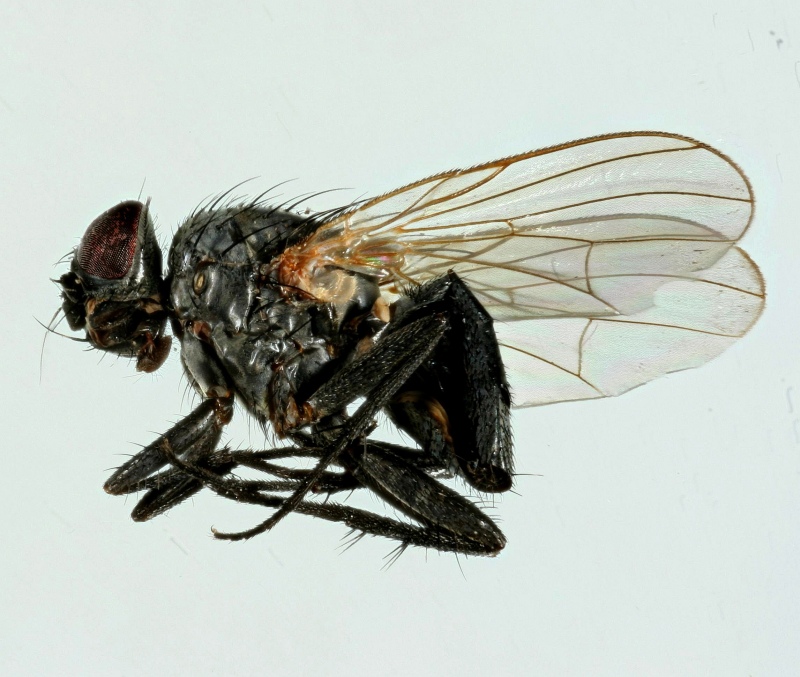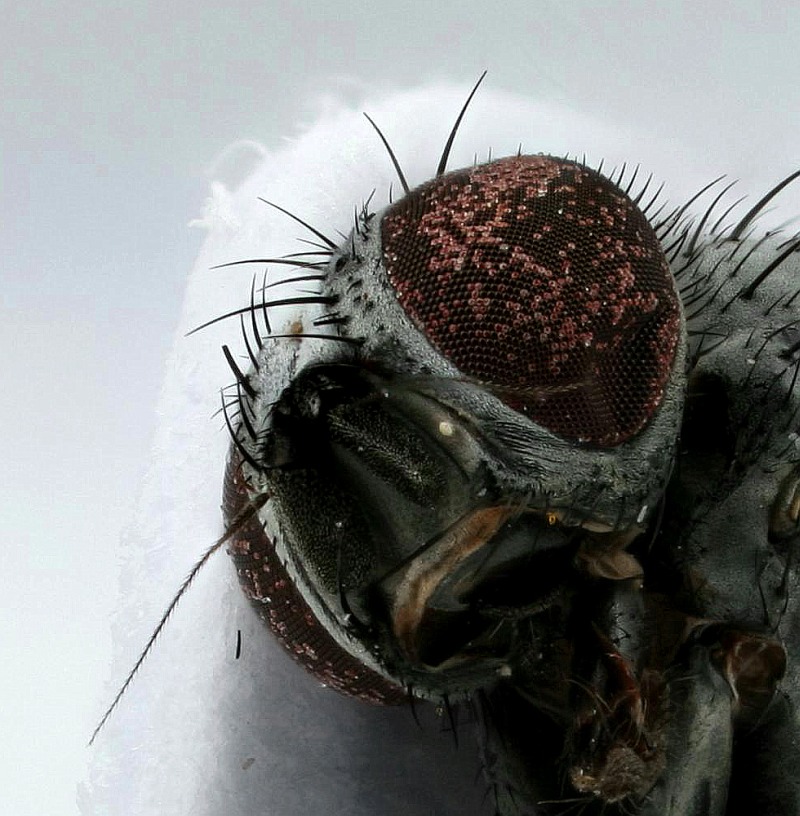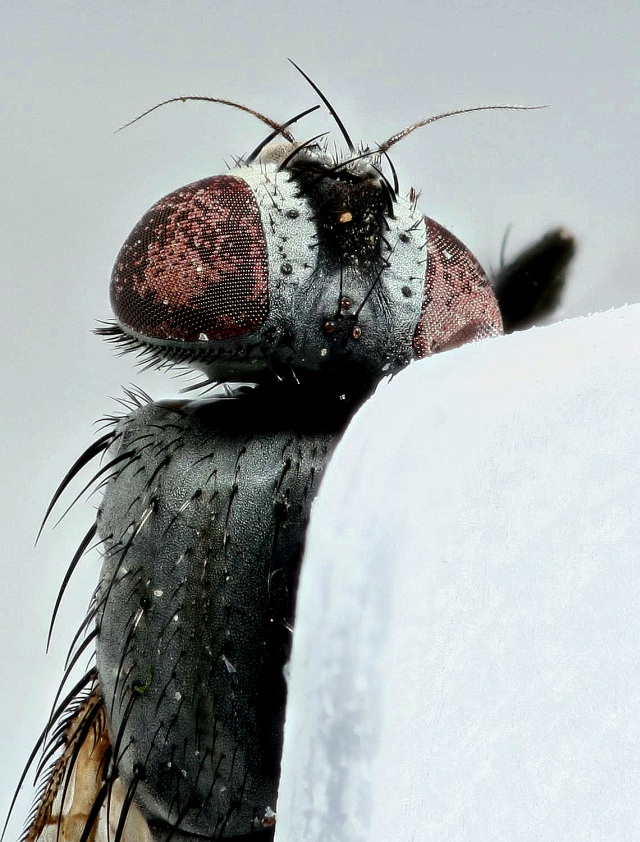Diptera.info :: Identification queries :: Diptera (adults)
Who is here? 1 guest(s)
|
Fannia sp. - cf. aequilineata
|
|
| Walther Gritsch |
Posted on 27-10-2010 23:39
|
|
Member Location: Copenhagen Posts: 281 Joined: 01.02.09 |
Hi This is perhaps asking too much given the shrivelled look of this specimen, but I thought the flattened palpi might give it away. My own idea is that it is Fannia latipalpis based on t2 without av; cx3 with setae; t3 with short accessory setae below strong ad; palpi dilated and arista practically bare. Does this make sense? The fly was taken on sugar bait on 18. x 2010 in a garden north of Copenhagen. Regards, Walther Gritsch attached the following image:  [180.98Kb] Edited by Walther Gritsch on 28-10-2010 23:48 Walther |
|
|
|
| Walther Gritsch |
Posted on 28-10-2010 20:55
|
|
Member Location: Copenhagen Posts: 281 Joined: 01.02.09 |
I've been doing some re-thinking. The parafacials are bare except for a line of short setulae and t2 has an anterodorsal. This paves the way for Fannia atripes - a species with spoon-shaped palpi about a broad as the 3rd segment of the antenna. Anyone feeling like commenting on this matter? I use Rozkosny, Gregor & Pont and couplet 5 in the key to the females is where I frequently get it wrong! Regards, Walther |
|
|
|
| Walther Gritsch |
Posted on 28-10-2010 20:57
|
|
Member Location: Copenhagen Posts: 281 Joined: 01.02.09 |
Oops! Forgot the pic to prove my point 
Walther Gritsch attached the following image:  [164.27Kb] Walther |
|
|
|
| Nikita Vikhrev |
Posted on 28-10-2010 21:55
|
|
Member Location: Moscow, Russia Posts: 9313 Joined: 24.05.05 |
Parafacials with a row of short setulae. It is either aequilineata or latipalpis. Nikita Vikhrev - Zool Museum of Moscow University |
|
|
|
| Walther Gritsch |
Posted on 28-10-2010 22:52
|
|
Member Location: Copenhagen Posts: 281 Joined: 01.02.09 |
Thank you, Nikita! Blagodarju! I got it right from the start then. I've made a last shot. F. latipalpis has frons at level of upper eye angle broader than 1/3 of head width and arista virtually bare. F. aequilineata has frons less than 1/3 of head width and arista distinctly pubescent. With this in mind I think I'll go for Fannia latipalpis if you have no objections... Regards, Walther Gritsch attached the following image:  [181.78Kb] Walther |
|
|
|
| Nikita Vikhrev |
Posted on 28-10-2010 23:25
|
|
Member Location: Moscow, Russia Posts: 9313 Joined: 24.05.05 |
Walther, I have objections. 1. With all my deep and sincere respect to Rozkosny, Gregor & Pont, I'm not convinced that their key works OK in case of females aequilineata/latipalpis. 2. Beyond these doubts, arista is "distinctly pubescent", which is well visible on your images, so I'd choise aequilineata, if any. Edited by Nikita Vikhrev on 28-10-2010 23:28 Nikita Vikhrev - Zool Museum of Moscow University |
|
|
|
| Walther Gritsch |
Posted on 28-10-2010 23:49
|
|
Member Location: Copenhagen Posts: 281 Joined: 01.02.09 |
Well, I'll settle for Fannia cf. aequilineata. Thanks again  Regards, Walther |
|
|
|
| Jump to Forum: |















